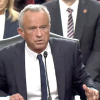GOP Needs To Turn Lessons of ’22 Into Victories of ‘24

Post-mortems of the midterms concluded that the GOP underperformed in 2022. It’s difficult to argue that we didn’t. But at the end of the day, after the ritual finger-pointing and recriminations from the D.C. consultant class, the real question is: Did we learn enough to avoid a sequel in 2024?
2022 taught us some clear lessons: We need to build a ballot harvesting machine; we have to fix the massive cash gap; and we must execute a more effective message strategy.
As returns came in on Election Day, the cable news talking heads spewed tedious takeaways on turnout. Yes, elections are about turnout and the Democrats did better. Yet the response by some in my party has been to complain about early vote procedures and Democrats gaming the system with their ballot harvesting operation. But early voting and mail-in ballots are here to stay – because voters like these options.
Instead of standing around hand-wringing, Republicans need to build a better ballot harvesting machine that beats Democrats at their own game. We can do this. We just need to accept reality, suck it up, and make fixing the problem a priority. In other words, stop playing defense, for example, by appointing “election integrity officers,” and go on offense and build a ruthless infrastructure to harvest early votes.
The same goes for fundraising. Of course, candidate quality matters and there has rightly been a lot of discussion about it. But when your candidates are outspent 2:1 or even 3:1 in hard dollars by their Democrat opponents – like in Georgia, Arizona and Nevada – you’re probably not going to win. On the abortion issue alone, Democrats outspent Republicans $400 million to $10 million, driving a dishonest but effective message of fear to persuadable voters.
This hard money disparity between Republican and Democrat candidates is alarming and it exists among all tiers of candidates. Our party needs to focus on fixing this chasm. If we don’t, nothing else matters.
The GOP also needs to pivot our message strategy, in three key ways.
First, speak to solutions, not just to the base. This is critical, as battleground state elections are often decided by less than 8% of the electorate. Candidates who speak just to the base are simultaneously scaring the daylights out of the persuadable universe – and painted as extremists by the left and the media. Turn out the base by talking about Biden’s failures – there are plenty of them. But earn the trust of the persuadable voter by talking about solutions. Some 2022 Republicans did exactly that.
Many GOP candidates did a good job creating a contrast and tying their opponent to President Biden’s failures. But Senate candidates who lost in 2022 can learn some lessons from winning gubernatorial candidates. Brian Kemp talked about the booming Georgia economy. Ron DeSantis leaned into reopening Florida and his COVID response. Sheriff Lombardo laid out his solutions on education and affordable housing. Sure, they threw red meat to the base – candidates must. But they also talked about solutions and accomplishments – and that’s what made the persuadables, often 8%-10% of the electorate, vote for the Republican candidate.
Second, speak in a tone that voters can hear. In contemporary American politics the issue sets that engage and persuade voters are more myriad than candidates – and political consultants – care to admit. Each voter is unique, and the vast majority are capable of deciding when to turn out and support or oppose a candidate, and when to stay home.
Attack ads work and the polling data backs that up. But like the next Marvel superhero movie, campaigns in this country have become predictable, unmemorable, billion-dollar blockbusters. In a world inundated with social media, streaming, and mobile devices, choices are unlimited and attention spans are short. What’s clear in the research is that voters crave original content and unifying themes that bring people together. Doom scrolling and endless attack ads are a byproduct of a broken system, not a defining feature of American democracy. Politics should be an additive in the lives of voters, and creating an effective tone starts with turning down the noise.
Finally, don’t just talk to white voters. More than one in four 2022 midterm election voters were people of color, including over 11% Latino and Hispanic, many of whom reside in battleground states. In Arizona and Nevada alone, Hispanic and Latino populations increased 84% and 148% over the last twenty years, respectively. Republicans can’t simply airdrop into these districts in September of an election year and hope to garner the vote share they need to win. Only a sustained effort works. Marco Rubio proved this by starting early and vastly outspending Val Demings on Spanish language media platforms, meanwhile earning 56% of the Hispanic vote. This should be the rule, not the exception.
With the elections for speaker and RNC chair behind them, now is the time for Republicans to turn the lessons of 2022 into the victories of 2024.
Erik Iverson is a Republican pollster and president of Moore Information Group.











